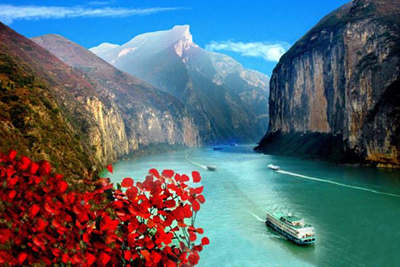Top 6 Greatest Dynasties of China
There are 24 dynasties in ancient China, spanning around 4000 years from 2070BC to 1912AD. In the heyday of ancient Chinese history, China’s territory was once extended to Central Asia and Siberia. Today when we visit the historical sites like the Great Wall and Forbidden City, we still find traces of the powerful dynasties of China and picture those extraordinary times. Then wonder what the greatest Chinese dynasties are? And why? It is probably that everyone has his/her own answers, and even the historians are still arguing over it endlessly.
In general, people agree that the 6 greatest and most powerful Chinese dynasties in history are Tang Dynasty, Yuan Dynasty, Ming Dynasty, Han Dynasty, Qin Dynasty and West Zhou Dynasty.
1. Tang Dynasty – once the center of the world and witnessed the zenith of Chinese economy, culture and political power
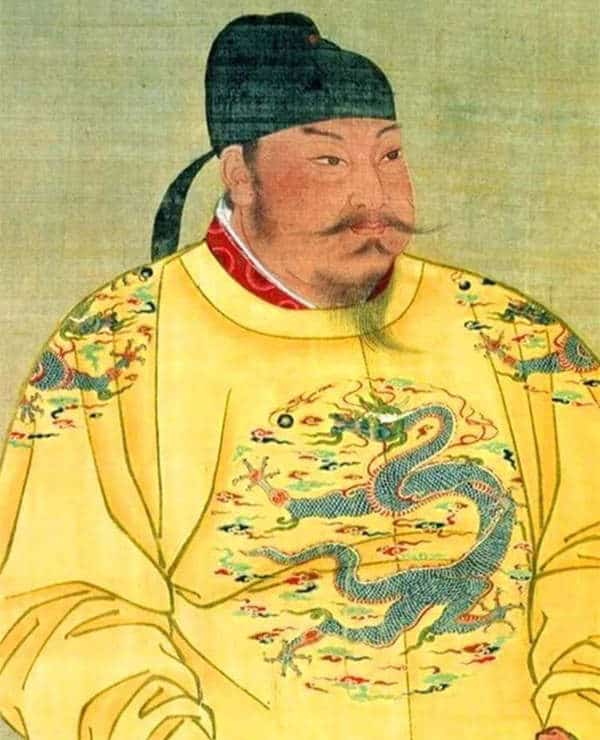
(Emperor Taizong of Tang)
- Time: 618 - 907
- Founder: Emperor Tang Gaozu (Li Shimin 李世民)
- Maximum Area: about 20.37 million square kilometers
- Largest population: 80 to 90 million
- Military power: In his later years of Emperor Xuanzong's reign, the total number of troops in China was about 570,000,
- Economy: In the reign of Empress Wu Zetian, GDP was equal to about $23.9 billion.
The Tang Dynasty was a unified dynasty following the Sui Dynasty (581 - 618). It lasted for two hundred and eighty-nine years and was generally recognized as one of the most powerful dynasties of China. Besides its superior military power, it was also a period of great prosperity in political, economic, cultural and institutional aspects.
At its height, the Tang Empire stretched from the Korean Peninsula in the east to The Area of Hue, Vietnam in the south, to the Aral Sea and Khorasan in central Asia in the west, and to Lake Baikal in the north.
The Tang dynasty not only conquered the neighboring countries with its military strength, but also, more importantly, influenced greatly the neighborin g countries like Japan, Silla, Siam, Chenla, Vietnam, and Persia with its culture and economy. The Tang Dynasty adopted a very tolerant attitude towards other cultures and religions, and encouraged all nations at home and abroad for cultural exchange and study, thus forming a wide and open international culture. At that time, people from all over the world could come to Chang'an (today’s Xian City) to travel around, study and settle down. Chang'an was like an international metropolis.
The Tang Dynasty and the Arab Empire were the most powerful empires in the world at that time. Their reputation spread far and wide, and they had contacts with Asian and European countries. Today, Chinatowns (Tang people’s streets) are built in the most prosperous places in the world; some countries still call China Tangshan, and call the Chinese Tang People – all indicating that the Tang Dynasty was so powerful.
>> Recommended: 3-day Historical and Archeological Tour in Xian
■ Compare the Major Achievements between Tang Dynasty and the Same-period West World
Before and during the Tang Dynasty, Europe began the early Middle Ages, known as the "Dark Ages", when the Europe was still depopulated, de-urbanized, invaded and displaced, and saw little scientific and cultural advancement.
In the 7th century, the Tang Empire, the Persian Empire, the Arab Empire and the Byzantine Empire dominated the earth from east to west. They moved toward magnificently or fell in the following centuries.
| Tang Dynasty | West World | |
|---|---|---|
| Science & technology | Gunpower, woodblock printing, timekeeping, mechanical engineering, medicine, and structural engineering | Greatly improved water mills, building techniques |
| Culture & art | The first comprehensive criminal code in China was invented; Chinese poetry reached its heyday; Literature flourished; Porcelain was invented; Painting matured; The first opera troupe in China – Pear Garden | Monastic and cathedral schools |
| Architecture | Brick and stone architecture | Gothic architecture, medieval castles |
| The most famous figures | Zhang Heng, Emperor Tang Xuanzong, Li Bai, Du Fu, Monk Xuanzang, Monk Jianzhen, Liuzongyuan, Bai Juyi, etc. | Charlemagne |
2. Yuan Dynasty - nomadic people conquered the world and built the largest territory in history
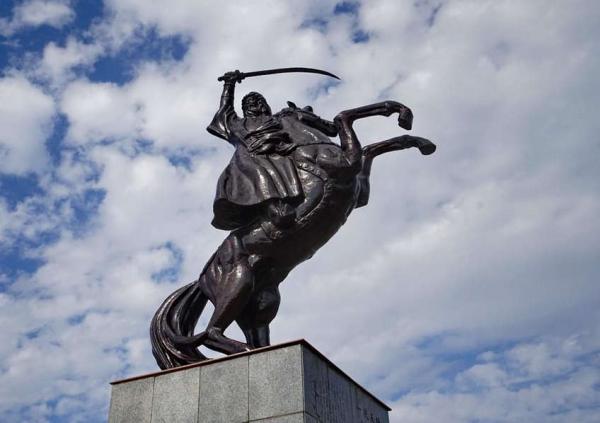
(Statue of Genghis Khan)
- Time: 1271 - 1368
- Founder: Genghis Khan (成吉思汗)
- Maximum Area: about 21.00 million square kilometers
- Largest population: 85 million
- Military power: Yuan Dynasty had relatively strict control over the number of troops, due to the Mongols’ large number of cavalr and ethnic division system. The number of troops in this period was about 500,000.
- Economy: In the early years of the Yuan Dynasty, the GDP was equal to about $32 billion.
The Yuan Dynasty was founded by the Mongols and established its capital as Dadu (today’s Beijing). It had 11 emperors and lasted for 98 years. It ended the division since the late Tang dynasty and the Five Dynasties and united China again.
The Yuan Empire, dominated by present-day China, was the largest in Chinese history, with an area of more than 21 million square kilometers, reaching to the north of Yinshan Mountain in the north, Nanhai Islands in the south, Sakhalin Island in the northeast, and Xinjiang and Central Asia in the northwest. Today’s Xinjiang, Tibet, Yunnan, northeast China, some islands in Taiwan, and Nanhai Zhudao are all under Yuan Dynasty’s rule.
The establishment of the provinces in the first administrative region of China created by the Mongols is still in use today. The Mongols made Tibet an inalienable part of Chinese territory for the first time. The Mongols eliminated the Dali regime and set up Yunnan Province, ending the situation in which the Yunnan region had been separated from the central government for nearly a thousand years since the Northern and Southern Dynasties.
>>Recommended 6-day Genghis Khan Tour from Beijing to Zhangjiakou to trace the history of Yuan Dynasty
■ Compare the Major Achievements between Yuan Dynasty and the Same-period West World
By the reign of Yuan Dynasty, Europe entered the end of the Middle Ages, the prototype of the European modern countries like Britain, France, Germany, Italy, Russia, etc., began to appear. The Shinra Empire was in its last days. The Umayyad Dynasty was losing ground in the Iberian Peninsula. The Eastern Roman (Byzantine) Empire also came to an end. The last Crusade ends in Europe. The Hundred Years' War had begun. Europe was about to enter the dawn of capitalism, the eve of the Renaissance. The Inca civilization in South America entered its final phase. Venice and other maritime city-states rose and entered a highly developed period. The Netherlands in northern Europe began to prosper, establishing trade routes with Venice, known as the Amber Road.
| Yunan Dynasty | West World | |
|---|---|---|
| Science & technology | Advancements were made in areas such as mathematics, medicine, printing technology, and gunpowder warfare. | Gutenberg's movable type printing press eyeglasses and the weight-driven clock |
| Culture & art | Novels, landscape art, the Phags-pa Script, and beautiful pottery of distinctive blue and white hues; The invention of tea pot; The movable type printing was made efficent | Humanist movement, the Renaissance, many innovations within the fields of science, art and literature |
| Architecture | Buddhist and Islamic architecture continued developped | Gothic architecture |
| The most famous figures | Genghis Khan, Kublai Khan, Yelü Chucai, Guan Hanqin, Guo Shoujing, Shai Nai'an, etc. | Dante Alighieri, Giovanni Boccaccio, Geoffrey Chaucer, Christine de Pizan, Edward III |
3. Han Dynasty - the Huaxia people have been called the Han Chinese since the Han Dynasty
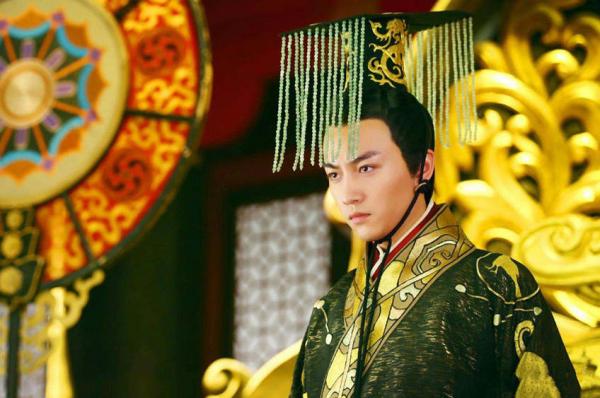
(Emperor Wudi of the Han Dynasty played by Chen XIao on TV series)
- Time: 202BC - 220 AD
- Founder: Emperor Han Gaozu (Liu Bang 刘邦)
- Maximum Area: about 6 million square kilometers
- Largest population: 60 million
- Military power: The Han Dynasty implemented the policy of recuperation. The number of troops in the early Han Dynasty was about 300,000
- Economy: The GDP of the Han Dynasty was equal to about $26.55 billion.
The Han Dynasty (including West Han and East Han) in Asia and the Roman Empire in Europe were ranked as the most advanced civilization and powerful empires in the world at that time.
In its heyday of the Han Dynasty, China’s territory reached Korea in the east, Vietnam in the south, Congling in the west and Daggobi in the north. It had a population of about 60 million, accounting for one third of the world at that time.
In Han Dynasty, the Chinese culture was unified. The traditional Han culture, represented by the Confucian culture, was formally formed. The two Han Dynasties also made great achievements in the field of science and technology, for example, Cai Lun improved paper making, which become one of the Four Great Inventions of China, while Zhang Heng invented the seismograph and armillary sphere.
During the reign of Emperor Wudi of the Han Dynasty, Zhang Qian was sent on a mission to the Western Regions to connect China with the nomadic countries in the Western regions and open up the Silk Road. Ban Chao, during the reign of Emperor Hedi of the Han Dynasty, extended the Silk Road to Europe, further enhancing the cultural and economic exchange. In 100 AD, the Roman Empire sent envoys to the Imperial Court of the Han Dynasty.
>> Recommended: 12-day Silk Road Tour: Xian to Urumqi
■ Compare the Major Achievements between Han Dynasty and the Same-period West World
During the Han Dynasty of China, there were the Xiongnu Empire, the Peacock Empire, the Kushan Empire, the Parthian Empire, the Seleucid Empire, the Roman Empire, the Mayan Empire, and the Carthaginian Empire in the world. It is worth meaning that in BC46, Caesar began the age of its empire.
The Wesst Han Dynasty, and Parthia, Greece, Mediterranean city-states and Roman republics shared the same period.
The Wesst Han Dynasty, and Roman Empire and Sassanian Persia shared the same period.
| Han Dynasty | West World | |
|---|---|---|
| Science & technology | Han Dynasty Great Wall, the invention of paper, use of water clocks and sundials to measure time, and development of a seismograph | Building techniques, the invention of watermill, essentials of the Steam engine |
| Culture & art | Yuefu Music, Bell Bronzem Shiji, the poetic form of fu, lacquerwork and woven silk | Amphitheatre, temples, theaters, bath complexes, and triumphal arches, iconography |
| The most famous figures | Sima Qian, Emperor Liubang, Emperor Wu of Western Han, Zhangheng, Bangu, Banchao, Cui Lun, Zhang Zhongjing, etc. | Julius Caesar, Titus Labienus, Theodosius of Bithynia, Ptolemy, Justin Martyr, Agrippa II, Gaius Octavius Thurinus, etc. |
4. Ming Dynasty – it had the most powerful fleet in the 15th Century
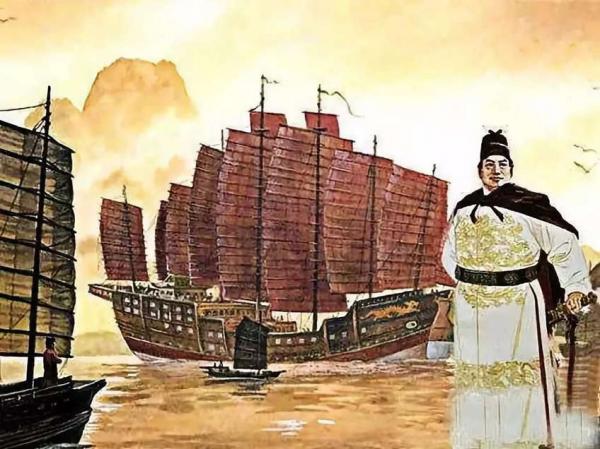
(Painting of Zhenghe and his fleet)
- Time: 1368 - 1644
- Founder: Emperor Ming Taizu (Zhu Yuanzhang 朱元璋)
- Maximum Area: about 9.97 million square kilometers
- Largest population: 71.85 million (some say over two hundred million)
- Military power: The Ming Dynasty had the only ocean-going fleet in the world. The total number of troops was about 1 to 2 million.
- Economy: The GDP of the Ming Dynasty was equal to about $33.9 billion.
The Ming Dynasty lasted for 276 years and had sixteen emperors. In the early stage, Nanjing was established as the capital, but later in 1421, Beijing became the capital.
The Ming Dynasty is one of the greatest Chinese dynasties. Firstly it was the only dynasty in Chinese history that had a navy – Zheng He’s Fleet, which was the world’s most powerful navy and the only ocean-going fleet. Zheng He and his fleet had 7 voyages to the “ancient Western Seas” (including today’s Vietnam, Cambodia, Thailand, Sumatra and Java of Indonesia, Malacca, Sri Lanka, Maldives and some other counties and areas) were the largest-ever navigation in ancient China, with the largest number of ships and sailors and the longest time. They were also the largest series of maritime expeditions in the history of the world before the voyages of European geographical discoveries at the end of the 15th century.
Secondly, the Ming Dynasty army could defeat the invincible Mongols. Thirdly, The Ming dynasty was also one of the few countries in the world that could manufacture and equip themselves with gunpowder. The gunpowder weapons of the Ming Dynasty were the most advanced and large-scale in the world at that time.
Economically, the absolute GDP of the Ming Dynasty was larger than that of the Han and Tang dynasties, accounting for about 40% of the world's total GDP during the same period. In the 16th and 17th centuries, the Ming Dynasty was one of the most prosperous countries in the world in terms of industry and economy.
>> Recommended: 1-day Beijing City Walking Tour
■ Compare the Major Achievements between Ming Dynasty and the Same-period West World
In the early Ming Dynasty, central Asia and European countries were still feudal societies, while in the middle and late Ming Dynasty, European countries had gradually transitioned to industrial society (capitalist society). During the Ming Dynasty, the Byzantine Empire in Europe was on the wane, and finally fell in 1453. The Ottoman Empire reached its peak. The Spanish Empire gradually reached its golden age, becoming the undisputed hegemon of Europe in the 16th century. But, After defeating the Spanish Armada in 1588, the British Empire gradually replaced Spain and became the emerging hegemonic power on the sea. It began to expand overseas colonies and became the empire on which the sun never sets. In the middle and late Ming Dynasty, the Portuguese Empire also gradually developed into a global colonial empire.
| Ming Dynasty | West World | |
|---|---|---|
| Science & technology | Ming Dynasty Great Wall, a world leader in the use of gunpowder-based weaponry, shipbuilding and navigation, and the production of porcelain and various other materials requiring technological knowledge | The introduction of the spinning wheel, the first portable watch, the first theory of complex numbers, the invention of the graphite pencil, stocking frame, Binary system, kinematics, the mean speed theorem, Psychiatric hospitals, the discovery of Supernova SN 1604 |
| Culture & art | The thriving of full-length novels, play scripts, book illustration Medical book of Compendium of Materia Medica The Forbidden City was constructed Yongle Encyclopedia or Yongle Dadian Chinese ceramics became world famous | The Renaissance Rise of Modern English language the invention of Scotch whisky, Opera in Florence ice cream King James Bible was first published |
| The most famous figures | Zheng He, Li Shizhen, Hongwu Emperor (Zhu Yunan Zhang), Yongle Emperor (Zhu Di), Zhang Juzheng, Liu Bowen, Tang Xianzu, Feng Menglong, etc. | Ivan III, Grand Duke of Moscow, Charles the Bold, Johannes Gutenberg, Galileo Galilei, Copernicus, Francis Bacon, and Descartes, John Napier, etc. |
5. Qin Dynasty - the first feudal dynasty in Chinese history
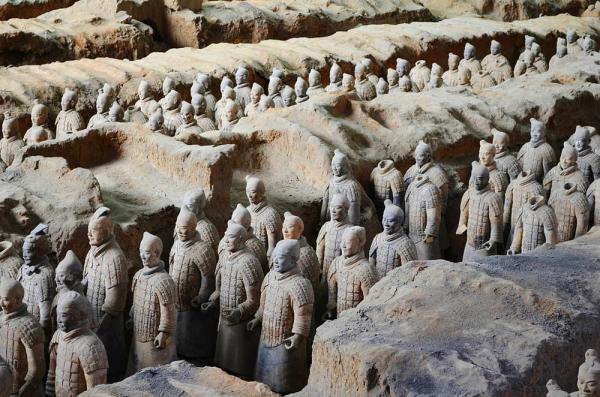
(The mighty Terracotta Amry of Emperor Qinshihuang)
- Time: 221 BC- 207 BC
- Founder: Emperor Qinshihuang (Ying Zheng 嬴政)
- Maximum Area: about 3.4 million square kilometers
- Largest population: Between 25 and 30 million
- Military power: The Ming Dynasty had the only ocean-going fleet in the world. The total number of troops was about 1.5 million.
The first feudal dynasty of China, Qin Dynasty lasted only for 14 years, with only two emperors. But it has been regarded one of the most powerful dynasties and had great influence on Chinese history.
It took ten years for the first Emperor of Qin to sweep through the six kingdoms, complete the unification of China, and assume the throne as emperor. After the unification of China, the Qin Dynasty built the Great Wall to fight against the northern Huns and other nomadic peoples. It had a great army consisting of daredevil soldiers and talented generals. Bai Qi was one of them. He conducted more than seventy wars in his life and never lost, thus celebrated as “God of Wars”.
The Qin Dynasty established the imperial system and the central official system, abolished the system of enfeoffment of the Western Zhou Dynasty and replaced it with the system of prefectures and counties, maintained the unification of the country and strengthened the central government's control over the local areas. It promoted the unification of customs and writing, and standardized the weights and measures, thus strengthening the cohesion of the unification.
Today, when people visit the Terracotta Warriors and Horses of Qin Shihuang, they can still imagine the power and splendor of the Qin Empire over 2,000 years ago.
>> Recommended: 3-day Xian Highlight Tour with Terracotta Army
■ Compare the Major Achievements between Qin Dynasty and the Same-period West World
The Qin dynasty was at that time when the Alexander's Empire broke up and the Hellenistic came about, and the early Roman republic was established.
In 221 BC, Hannibal became commander of the Spanish army of Carthage and began the Second Punic War to regain the lost territory Ptolemy III (Ptolemy I) (276 - 221 BC) was the third pharaoh of the Ptolemaic dynasty of Egypt (reigned 246 - 222 BC).
Berenice II (266 BC - 221 BC) was the daughter of the ancient Cyrene King Magus and Queen Apama, queen and co-reigning of the Egyptian pharaoh Ptolemy III.
| Qin Dynasty | West World | |
|---|---|---|
| Science & technology | The written language, money, systems of measurement, and the sizes of cart axles are standardized. Traditional Chinese medicine | Astrolabe |
| Culture & art | Great Wall of China, Terracotta Army, the flourishing of Legalists | Alexander the Great, head from a Hellenistic copy of a statue; The illusion of thin slabs of colored marble covering the walls |
| The most famous figures | Emperor Qinshihuang, Lisi, Fusu, Wangben, Huhai, Zhaogao | Ptolemy III, Berenice II, astrolabeDemetrius I, Philip V, Abdissares, Euthydemus I |
6. West Zhou Dynasty - the longest dynasty in the history of China
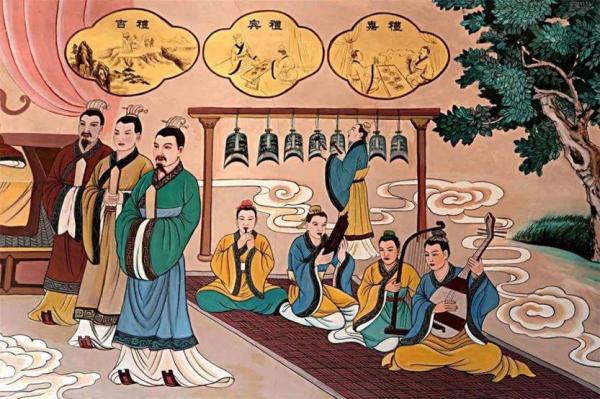
(Ancient Chinese music of West Zhou Dynasty)
- Time: 1046 BC- 771 BC
- Founder: Emperor Zhou Wuwang (Ji Fa 姬发)
The West Zhou dynasty had 12 emperors ruling China for almost 8 centuries. It has two capitals – today’s Xian and Luoyang. The West Zhou Dynasty was the heyday of China’s slave society.
The productivity of the society was more improved than that of the Shang Dynasty (1600 BC -1046 BC). Agriculture flourished and culture further developed. Patriarchal clan system and the “nine squares” system of land ownership were the basic social political and economic systems.
During its heyday, the territory reached across the Yangtze River in the south, Liaoning province in the northeast, Gansu Province in the west, and Shandong Province in the east.
Ever since the West Zhou Dynasty, China’s ethnic groups and tribes are constantly blending. The Chinese nation gradually formed.
>> Recommended: 14 Days China History Tour on Train
■ Compare the Major Achievements between The West Zhou Dynasty and the Same-period West World
The Greek Dark Ages that had risen in 1200 BC was ongoing at the time of the West Zhou Dynasty, and colonizes other regions of the Mediterranean Sea and Black Sea. It was also when the West Zhou Dynasty was established in the 10th century BC, the Neo-Assyrian Empire was also established.
The Iron Age continued in India, while it was just started in Central Europe. Rome was founded in 753 BC, with the expanding of the Etruscan civilization in Italy. Right after five years after The West Zhou Dynasty broke up, the first Olympiad was set at 776 BC.
In Egypt, the Neo-Assyrian Empire had the 25th Dynasty and reached the pinnacle of its power, conquering the Kingdom of Israel as well as surrounding nations and states.
| West Zhou Dynasty | West World | |
|---|---|---|
| Science & technology | Iron tools, iron weapons, horse riding in battle, the inventors of the crossbow, firing arrows with iron tips | Olmecs build pyramids, Earliest surviving sundial is in use in Egypt |
| Culture & art | The development of bronze wares, the Rites of Zhou, the foundation of ancient Chinese archiecture, the Book of Poetry, the Twelve Animal signs (the Chinese Zodiac) | The Proto-Celtic Hallstatt culture, and the Proto-Celtic language, the epics of Homer |
| The most famous figures | King Wen of Zhou, King Wu of Zhou, Jiang Gan, Jiang Ziya, etc. | David, king of the ancient Israelites, Homer, Eunomus, king of Sparta, etc. |

